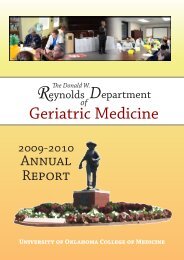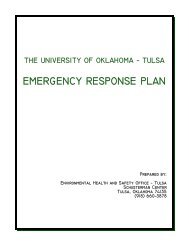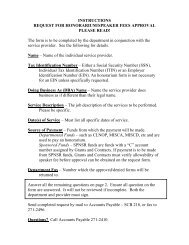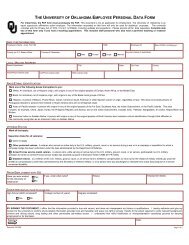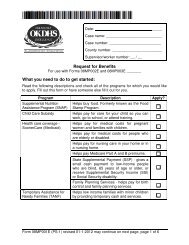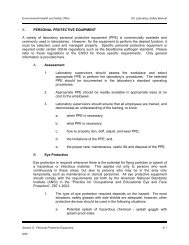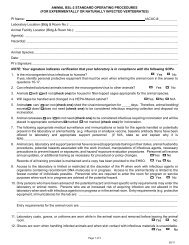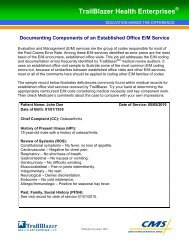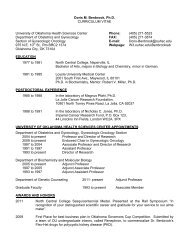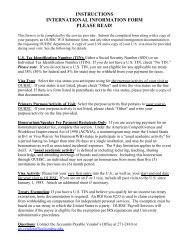The Unofficial Guide to First Year - University of Oklahoma Health ...
The Unofficial Guide to First Year - University of Oklahoma Health ...
The Unofficial Guide to First Year - University of Oklahoma Health ...
You also want an ePaper? Increase the reach of your titles
YUMPU automatically turns print PDFs into web optimized ePapers that Google loves.
UNOFFICIAL GUIDE<br />
systems, which will be the basis <strong>of</strong> most <strong>of</strong> the exam questions. Other details<br />
that are good <strong>to</strong> know are the Starling equation, vascular function curves, and<br />
the barorecep<strong>to</strong>r reflex. Near the end <strong>of</strong> the section both Dr. McHale and Dr.<br />
Dormer will integrate the material on the heart and the peripheral vasculature.<br />
This is very helpful and key <strong>to</strong> understanding the overall picture. Once again,<br />
Dr. Dormer’s test questions are VERY hard and ambiguous. MAKE SURE when<br />
doing calculations that you correctly convert the units!!! You will find that the most<br />
complaints after the first block exam will come from his section. Since he has the<br />
most questions on the first test, it would serve you well <strong>to</strong> spend the majority <strong>of</strong><br />
your time thoroughly understanding the concepts <strong>of</strong> this section. You’ve been<br />
warned…<br />
BLOCK II<br />
RENAL:<br />
This might be the most overwhelming section <strong>of</strong> the entire year! Thankfully, Dr.<br />
Benyajati is AWESOME! Sometimes she lectures as if she has some sort <strong>of</strong><br />
hyperactivity disorder, but she’s just getting caught up in her passion. She’s also<br />
well aware <strong>of</strong> this tendency and will be very understanding if you ask her <strong>to</strong> slow<br />
down in the middle <strong>of</strong> class. She gives you more practice problems than you<br />
think you have time for… MAKE time for them!<br />
For this section, more than any other, I think it is particularly helpful <strong>to</strong> make a<br />
table. Use the table <strong>to</strong> keep track <strong>of</strong> what is going on the proximal tubule, loop<br />
<strong>of</strong> Henle, and distal nephron. Know what gets reabsorbed and secreted in each<br />
section and how it is regulated. It is also particularly important that you do<br />
practice questions <strong>to</strong> make sure you understand the various body compartments<br />
and what happens when one <strong>of</strong> them is altered, as well as GFR and associated<br />
Starling forces, clearance, transport, renal plasma flow, and acid-base balance. If<br />
you work through the practice questions online and the questions she hands out<br />
and understand them well, you will do fine on the exam. All <strong>of</strong> her exam<br />
questions are very fair and well written. Her syllabus is somewhat lengthy, so a<br />
day or so before the test you may benefit from reading the BRS book <strong>to</strong> get a<br />
quick review.<br />
RESPIRATORY:<br />
Dr. Farber might seem dull, but his explanations for this conceptually difficult<br />
section are very clear and I personally think he’s a great lecturer. He uses simple<br />
props like balloons, slinkies and turkey basters <strong>to</strong> help you visualize the material,<br />
which helps a lot. His syllabus is a little insufficient for a complete<br />
understanding, but his PowerPoint slides are excellent and I would recommend<br />
studying from these.<br />
75




